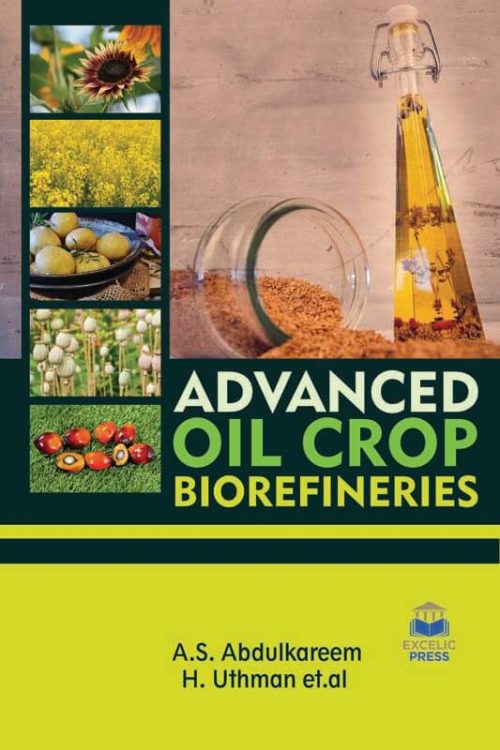Description
Biorefining of crops for the generation of power, fuels for transport, and a wide array of chemicals have prospective for delivering vital economic significance to biomass. The integration of agro energy crops and biorefinery manufacturing knowledge offers the prospective for the improvement of viable biopower and biomaterials that will clue to a new manufacturing prototype. The existing biorefineries will remain to grow and their upcoming development will be geared toward amplified sustainability by maximizing the utilization of biomass, improving energy efficiency, and being less wasteful.
This book provides a state of the art insight into the research and the development of oil crop biorefineries. In the field of olive oil extraction, current scientific research has focused on improving quality, paying particular attention to optimizing the efficiency of extraction and reducing the duration of the process. Recently, studies have been conducted to improve the traditional malaxation process and obtain positive effects on both oil production and consumption.
In this book, most recent studies that focused on the adaptation of emerging technologies to traditional extraction to increase the yield of olive oil or some minor compounds and bioactive components present in olive oil including tocopherols, chlorophyll, carotenoids, and phenolic compounds have been compiled. The present book next focuses on the optimization of extraction of oil from Moringa oleifera seed kernel which is non-edible oil, especially where it is abundantly available, as an alternative feedstock in the production of biodiesel.
It also presents a review on the effects of refining process on sunflower oil minor components; improvement of soybean oil solvent extraction through enzymatic pretreatment; soybean oil-quality variants identified by large-scale mutagenesis; the solid wastes of coffee production and of olive oil extraction in rural areas. Canola oil is extracted from rapeseed and consumed all over the world due to its valuable ingredients. It has a low amount of saturated and a substantial amount of monounsaturated fats with roughly 2:1 mono to polyunsaturated fatty acids. In general, it contains 61% oleic acid which is classified as a monounsaturated omega-9 fatty acid, 11% ?-linolenic acid and 21% linoleic acid which are omega-3 and omega-6 polyunsaturated fatty acids, and 7% saturated fatty acids. The book will serve as a valuable guide to students and practitioners working in the associated field and, moreover, may provide novel concepts and initial topics for future researches.





